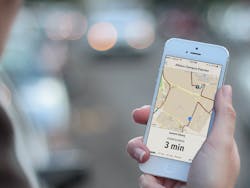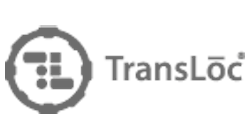How Transit Technology is Fostering Collaboration in College Towns
College towns across America face a unique set of challenges. Universities are often small cities within a city, with their own communities and ridership, but they are not stand-alone communities. They may operate their own transit agencies and bus fleets on campus, but many of their passengers also use municipal transit. Municipal and university transit agencies must co-exist within a larger community, even though the needs, priorities and demographics of their ridership can be quite different. Transit agencies in college towns must work together to support the needs of their communities and are now using transit technology to help foster collaboration in order to tackle these challenges together.
Universities, whether private or public, need to recruit students and providing transit is an important part of the college package. Students need transportation to and from class, to jobs on and off campus and to nearby shopping. To meet the needs of the student population colleges must provide safe transit — both fixed-route and on-demand (or after-hour) service. While on-demand services, also known as safe ride programs, are not a concern for municipal agencies, providing after-hour transportation is crucial for universities. The quality of these programs is important for both student safety and parental piece of mind.
University transit agencies must also provide service to the faculty and staff that is required to keep campuses running smoothly. The large numbers of students, faculty and staff moving through these systems create competition for finite resources like parking and add congestion on city streets. Universities also have large shifts in population throughout the year, impacting route planning for both the university and municipal transit agencies. It is also important to plan for sporting and cultural events, homecoming, parents weekend and graduation — events that cause an influx of visitors and add to service demands.
Despite the challenges, colleges have a positive impact on the community at large. They provide jobs, research centers and incubators, and many also operate hospitals. Students often work or volunteer in the community and support the local economy. The university transit agency also adds service that complements the municipal routes and can be used by the community at large. As a bonus, being home to a university increases overall transit ridership, which, in turn, increases federal funding for the municipal agency. If university and municipal agencies can communicate and share data, the two systems can make informed decisions about route and service changes that benefit the larger community as a whole.
University alumni often remain in the community after graduation and if they perceive transit to be a viable option, they will continue to ride transit. To help make transit more accessible and user friendly, many agencies are turning to smartphone apps. Mobile apps provide real-time data to passengers, allowing them to see when the bus is coming and where it is on the map. A mobile app can also be used as a communication tool, delivering alerts or notifications about schedule changes or delays right to their smartphone. Having a mobile app benefits the transit agencies as well — both by keeping riders happier and by providing agencies with the ability to gather valuable data about how their systems are being used via in-app surveys.
Information Sharing
Clemson, South Carolina, is an example of university and municipal cooperation supported by technology. Clemson University and Clemson Area Transit (CATbus) use software to gather data about how their systems are being used. They look at things like latent demand, stop usage and passenger origin and destination so that they can make informed decisions about when to run more buses, alter route frequency and make route and stop changes.
The population of the city of Clemson can fluctuate dramatically by time of year, since the student population vastly outnumbers the city population. In 2015 the Clemson student body topped 22,000, as compared to the city population of 14,000. Many of these Clemson students are part-time residents and have a big impact on transit and the community as a whole, so sharing this information is critically important to providing consistent and quality service.
These circumstances are not unique to Clemson. In the Triangle area in North Carolina, There are three college towns, Raleigh, Durham and Chapel Hill. These cities are home to North Carolina State University, Meredith College, Duke, North Carolina Central University and the University of North Carolina, just to name a few. In addition to this list, there is also Durham Tech, Wake Tech and other community colleges. These schools must exist side-by-side with the explosive growth in the region, some of which is driven by innovations developed on these campuses.
The Triangle has a host of public transit agencies to serve the region, including GoTriangle, GoRaleigh, GoDurham and Chapel Hill Transit. Area colleges and universities have their own campus-based services. To best serve their riders, these organizations have learned to collaborate. Recently, GoDurham worked with Duke University, the largest employer in Durham County, to improve service to the Duke University Health System. GoDurham operates its transit system via a hub located in downtown Durham. This hub is more than two miles from the hospital, yet the data showed that staff lived primarily in South Durham and routing them through downtown added significant time to their commute. To help make transit a viable option for the 16,000-plus hospital staff, GoDurham will be adding direct routes to help accommodate this previously underserved group.
Another example of this type of collaboration is happening in Tallahassee, Florida. The city is the state capital of Florida, with a resident population of more than 180,000, and is home to Florida State University (FSU), with a student population of 41,473. To keep things running smoothly throughout the city, Star Metro and FSU’s transit agency work together closely on planning.
Useful Data
Data on common trips, both system-wide and by route, helps determine what changes should be made. The agencies can see boarding, alighting and walksheds — data that can’t be gathered by simply using a passenger counter. This data is especially valuable as the two agencies deal with increased traffic caused by construction projects in the capital. They are better able to communicate with their riders about any delays using real-time data. Star Metro is also using the information to help plan for stop amenities to better serve riders, and the agency is leveraging the data when selling advertising space on buses and at stops.
All types of transit agencies, whether or not they are in college towns, can utilize technology to increase ridership. Understanding the needs of passengers and how they move to and away from your system and planning accordingly makes for a more user-friendly experience. Mobile apps are a must as we move into the future. Software that provides data about how riders are using your system and survey customers is the next step toward making public transit the first choice for all.
Josh Cohen is the director of strategy and partnerships of Durham, NC-based TransLoc.




